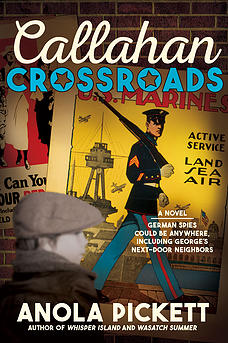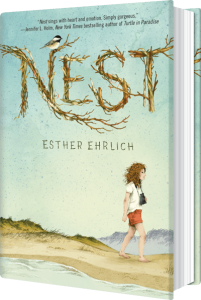Each book begins with a specific incident or memory that someone has shared with me,” author Anola Pickett reported in an interview posted on broadwayworld.com four days after her 80th birthday.
Set in Kansas City, Missouri, in 1918, her newest historical novel is Callahan Crossroads. Its main character, 12-year-old George, must decide how to react when bullies harass his elderly, widowed neighbor whose husband was German. During a KRUU interview, Anola identified how the creative impulse to write this book arose.
In 1918, when her mother was six years old, neighborhood boys made a dummy of Kaiser Wilhelm, attached it to the back of a car, dragged it around, and then burned it. Anola’s mother shared many memories with her about growing up in Kansas City, Missouri during World War I, but, for Anola, this one stood out.
“That gave impetus to exploring the negative attitude towards anyone or anything German during the war,” Anola explained.
During an earlier KRUU interview, Anola revealed the origin of Whisper Island, her second historical novel. Long ago, she and her husband attended a park ranger’s program at North Carolina’s Outer Banks.
“One shipwreck story that happened in 1913 caught my fancy,” Anola explained, “because the first person off the ship was the captain’s wife, who was very large. Instead of being grateful to the men who were rescuing her, she complained all the way off the ship about losing her jewelry, her clothes, and her fine things,” Anola recalled.
“The other thing that caught my fancy was the fact that when the captain came off, he brought his St. Bernard dog with him. Later he gave that dog to the villagers. So that gave me two little things to spring off of and develop a story,” she concluded.
An eight-year-old shepherdess inspired Anola’s first historical novel, Wasatch Summer. Anola heard the shepherdess’s story from a friend of a friend whose ancestor she was. (An Author’s Note explains that Anola made her fictional shepherdess, Hannah, three years older due to her book’s complexity.) Alone, in 1889, the real-life girl took her family’s sheep to a Utah mountain valley, where she stayed to tend them alone all summer. While there, she met Blackfeet Indians who helped and comforted her.
Octogenarian Anola Pickett spins odd things—Kaiser Wilhelm’s effigy aflame in Kansas City, Missouri; a St. Bernard rescued from a sinking ship near North Carolina’s Outer Banks; an eight-year-old shepherdess sent to tend sheep alone in a Utah mountain valley—into engaging and historically accurate fiction for children. Why? Her curious, caring, and compassionate nature compels her to share people who shaped our past with those who will form our future. Compassion, curiosity, caring—an octogenarian’s values seem oddly quaint in our present day era of hotly contentious division. If we could look at the world through kind, cool eyes like Anola’s, would our creativity flourish? Would we? Would our nation?



